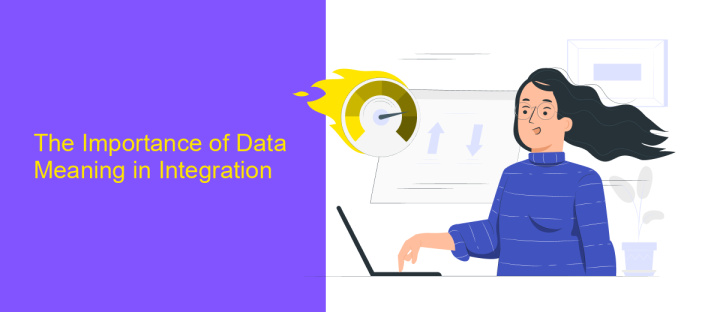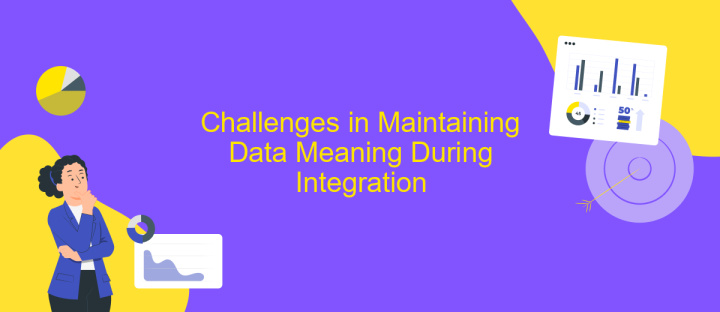Integration Data Meaning
In today's data-driven world, the integration of data from diverse sources has become a critical component for businesses seeking to gain meaningful insights. By unifying disparate data sets, organizations can uncover patterns and trends that were previously hidden, enabling more informed decision-making. This article explores the significance of data integration, its impact on business intelligence, and how it transforms raw data into valuable information.
Understanding Data Integration
Data integration is a critical process in modern data management, enabling organizations to combine data from various sources into a unified view. This process helps in creating comprehensive datasets that are essential for accurate analysis and informed decision-making. By integrating data, organizations can eliminate silos, improve accessibility, and enhance data quality.
- Data Cleansing: Ensures that data is accurate, consistent, and free from errors before integration.
- Data Mapping: Establishes relationships between data elements from different sources to ensure compatibility.
- Data Transformation: Converts data into a common format or structure to facilitate seamless integration.
- Data Loading: Involves transferring data into a target system or database for further use and analysis.
Effective data integration requires a strategic approach, considering the specific needs and goals of the organization. It involves leveraging technology and tools to automate and streamline the process, ensuring that integrated data is reliable and readily available. As data continues to grow in volume and complexity, mastering data integration becomes increasingly vital for maintaining a competitive edge.
The Importance of Data Meaning in Integration

In the realm of data integration, understanding the meaning of data is paramount. Data meaning refers to the context and semantics that give data its significance, enabling systems to interpret and utilize it effectively. Without a shared understanding of data meaning, integration efforts can lead to misinterpretations, errors, and inefficiencies. This is particularly crucial when dealing with diverse data sources, where variations in data formats and terminologies can pose significant challenges. By ensuring that data meaning is clearly defined and consistently applied, organizations can facilitate seamless data exchange and enhance the accuracy of their integrated systems.
Tools like ApiX-Drive play a vital role in simplifying the integration process by offering a platform that helps harmonize data from various sources. ApiX-Drive allows businesses to automate data flows between applications, ensuring that the data's meaning is preserved and accurately translated across systems. By leveraging such services, organizations can focus on deriving insights and value from their integrated data, rather than grappling with the complexities of data alignment and interpretation. Ultimately, understanding and maintaining data meaning is essential for achieving successful and efficient data integration.
Challenges in Maintaining Data Meaning During Integration

Maintaining the integrity of data meaning during integration processes is a complex challenge faced by organizations. As data flows from diverse sources, each with its own context and semantics, ensuring that its meaning remains consistent and accurate becomes crucial. This complexity is compounded by the need to harmonize disparate data models and terminologies, which can lead to misinterpretations and data quality issues.
- Semantic Discrepancies: Different data sources may use varying terminologies for similar concepts, leading to potential misalignments.
- Data Transformation: Necessary transformations can alter the inherent meaning of data if not carefully managed.
- Context Loss: When integrating data, the original context might be lost, affecting its interpretation.
- Data Quality: Inconsistent data quality across sources can compromise the reliability of integrated data.
- Scalability: As data volumes grow, maintaining semantic consistency becomes increasingly challenging.
Addressing these challenges requires a robust strategy that includes establishing clear data governance frameworks, employing advanced data mapping techniques, and utilizing metadata to preserve context. Additionally, fostering collaboration between domain experts and data engineers can aid in aligning semantics and ensuring that the integrated data retains its original meaning, thus supporting accurate decision-making processes.
Best Practices for Preserving Data Meaning

Preserving data meaning is crucial in any data integration process to ensure that the information remains accurate and useful. This involves maintaining the context and semantics of data as it is transferred between systems. Without proper attention, data can become distorted, leading to erroneous conclusions and decisions.
To effectively preserve data meaning, it's essential to establish clear data governance policies. These policies should define roles, responsibilities, and procedures for managing data across its lifecycle. Additionally, employing standardized data formats and terminologies can help in maintaining consistency and understanding across different platforms and teams.
- Implement data validation rules to ensure data integrity during integration.
- Use metadata to provide context and enhance data interpretability.
- Regularly audit data flows to identify and rectify any discrepancies.
- Engage stakeholders in defining data semantics to align understanding.
Finally, investing in training and education for all team members involved in data management can significantly enhance their ability to preserve data meaning. By fostering a culture of awareness and responsibility, organizations can ensure that their data remains a valuable asset, accurately reflecting the information it is intended to convey.
- Automate the work of an online store or landing
- Empower through integration
- Don't spend money on programmers and integrators
- Save time by automating routine tasks
Future Trends in Data Integration and Meaning
As we look to the future of data integration and meaning, advancements in artificial intelligence and machine learning are set to redefine how data is processed and understood. The integration of AI-driven algorithms will enhance the ability to interpret complex datasets, providing deeper insights and more accurate predictions. This evolution will facilitate seamless integration across various platforms, allowing businesses to harness the full potential of their data in real-time.
Moreover, the rise of no-code and low-code integration platforms, such as ApiX-Drive, will democratize data integration, enabling users without technical expertise to automate workflows and connect disparate systems effortlessly. These platforms will continue to evolve, offering more intuitive interfaces and robust functionalities. As data privacy and security remain top priorities, future trends will also focus on developing more sophisticated encryption techniques and compliance frameworks to protect sensitive information while ensuring seamless data flow across borders.
FAQ
What is data integration, and why is it important?
How can businesses ensure successful data integration?
What challenges are commonly faced during data integration?
How can automation help in data integration?
What are some best practices for data integration?
Apix-Drive is a simple and efficient system connector that will help you automate routine tasks and optimize business processes. You can save time and money, direct these resources to more important purposes. Test ApiX-Drive and make sure that this tool will relieve your employees and after 5 minutes of settings your business will start working faster.


